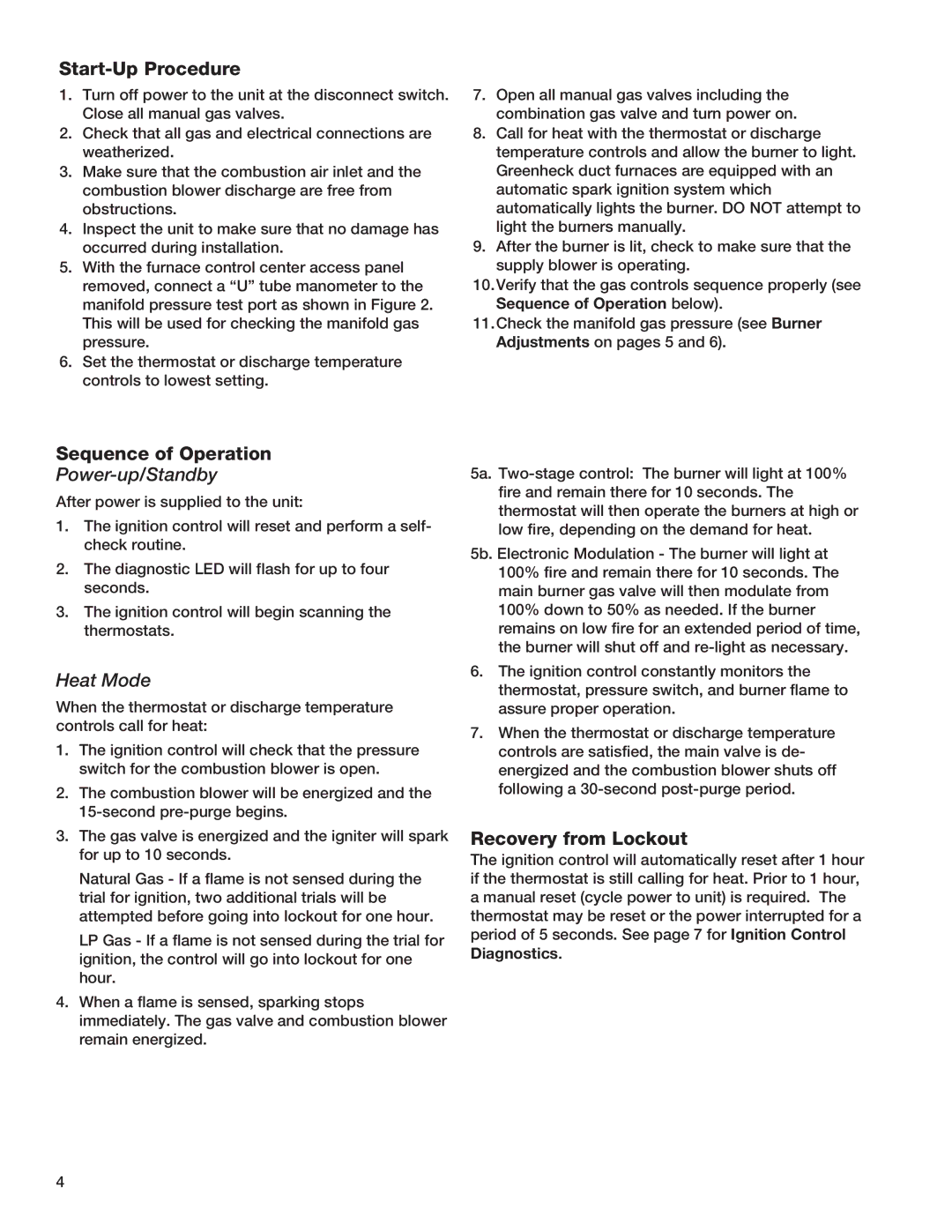PVF specifications
Greenheck Fan PVF (Packaged Ventilation Fan) represents a significant advancement in commercial and industrial ventilation technology. These fans are designed to provide efficient air movement for a variety of applications, ensuring improved indoor air quality and optimal operational performance. One of the main features of the PVF is its packaged design, which simplifies installation and minimizes the footprint of the equipment. This compact solution integrates multiple components into one unit, reducing the need for extensive ductwork and external accessories.The Greenheck Fan PVF incorporates several cutting-edge technologies that enhance its performance and energy efficiency. Its EC (Electronically Commutated) motors are a prime example, delivering advanced energy savings compared to traditional motor types. These motors also provide variable speed control, allowing users to adjust the airflow according to specific needs, further optimizing energy usage.
Another key characteristic of the PVF is its durable construction. The unit is built with high-quality materials resistant to corrosion and wear, ensuring longevity and reliable operation in demanding environments. Additionally, the fans are designed with insulated housing to minimize noise levels during operation, making them suitable for use in noise-sensitive areas.
The PVF also features an easily accessible maintenance design, which promotes user-friendly serviceability. The arrangement of components allows for quick inspections or repairs without the need for extensive disassembly. This design consideration refreshes the operational uptime of the unit, ensuring that ventilation requirements are consistently met.
Moreover, Greenheck's commitment to sustainability is reflected in the PVF's design. The fan is engineered to meet or exceed industry standards for energy efficiency, making it an eco-friendly choice for businesses looking to reduce their carbon footprint. Its versatility allows the PVF to be used in various applications, including restaurants, schools, and commercial buildings, adapting seamlessly to diverse airflow needs.
In conclusion, the Greenheck Fan PVF is a state-of-the-art packaged ventilation fan that combines performance, efficiency, and durability. Its innovative technologies, compact design, and user-friendly features make it an ideal choice for a wide range of commercial and industrial ventilation applications, reinforcing Greenheck's reputation as a leader in the ventilation industry.
